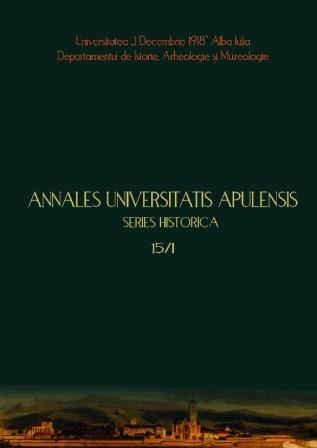Imaginea Franţei în scrierile profesorului blăjean Ioan Rusu (1811-1843)
The image of France in the writings of the teacher Ioan Rusu, from Blaj (1811-1843)
Author(s): Iacob Mârza, Coralia Maria TeleaSubject(s): History
Published by: Editura Mega Print SRL
Keywords: Ioan Rusu; France; cultural patrimony; Paris; Vormärz
Summary/Abstract: This paper intends to make a modern and systematic analysis of the pages dedicated to the geography and history of France in the textbook entitled Icoana pământului sau Carte de Geografie (The Earth’s Icon or Book of Geography), I-III, Blaj, 1842-1843. The author of this textbook, Ioan Rusu, taught chronology, geography, and general history at the Lyceum Episcopale Balasfalvense. The textbook was divided in three sections (Francia. A Peste tot (Everywhere) B. Topografia (The topography), C. Coloniile Franciei (France’s colonies)). The discourse of the author contains poised observations and opinions regarding the natural and cultural patrimony of the country, France’s borders, the general setting of the country, the natural attractions, the cultural development of its people, the low level of education in some social categories, the physical and moral qualities of the inhabitants, the courage of French soldiers, and so on. An original geographical perspective, with texts and illustrations stimulating the curiosity of the reader by drawing his attention to monuments or nature’s wonders, occur in the description of Paris. The multicultural approach, starting from topography, allowed the author, after providing the topographical coordinates of the city (longitude, latitude, relief), to discuss the administrative structure, enumerating the 14 squares of Paris, the main streets and boulevards, the ecclesiastical monuments. Hollowing the frequent geographical and historical intersections, he described several memorable places in the proximity of the capital. The interest of Ioan Rusu for the culture and history of France can be identified as part of the broader and difficult process of penetration of the French culture and civilization in the society of Transylvanian Romanians. Using primary sources which are likely to be investigated with methods of research of imagery and mentalities of Romanians before 1848-1849, we are dealing with a spiritual phenomenon with European political connotations, according to the trinomial Aufklärung - Vormärz - Revolution, manifested under the aegis of the Latinity idea, demonstrated by the previous generations of the Transylvanian School and valued, from the point of view of the national policy, by Transylvanian Romanian intellectuals, both liberal and romantic.
Journal: Annales Universitatis Apulensis Series Historica
- Issue Year: 15/2011
- Issue No: 1
- Page Range: 287-300
- Page Count: 14
- Language: Romanian
- Content File-PDF

